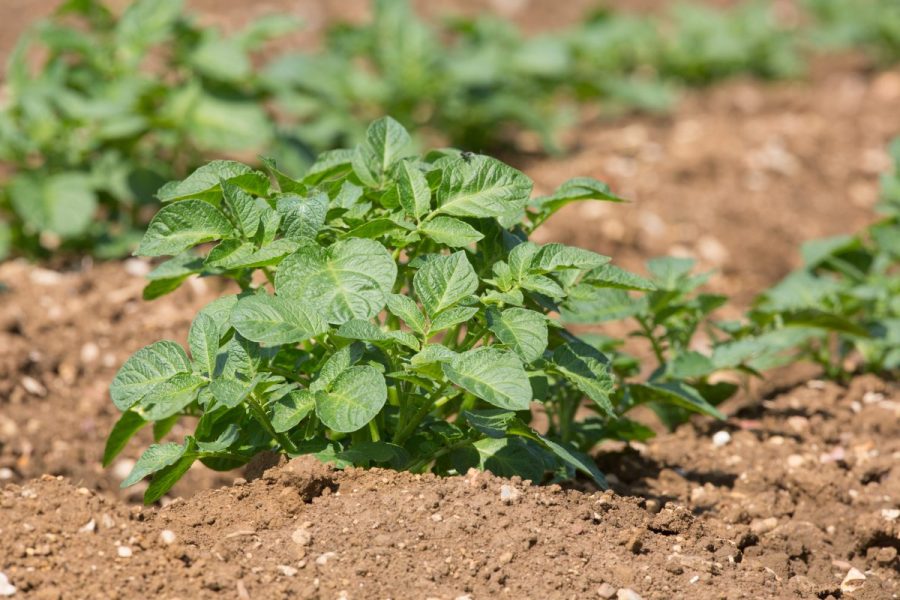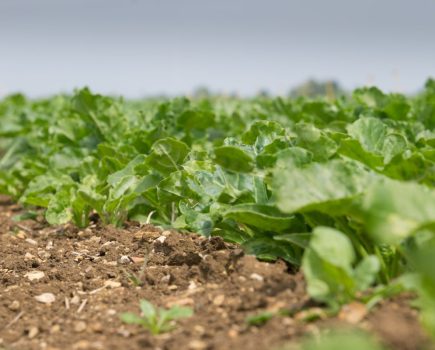A study claims to have solved the mystery of how potatoes evolved, and critically, the findings could help plant breeders to improve the drought tolerance of the crop. CPM takes a closer look.
“When two genes combine, as in the potato plant, they trigger the powerful process that transforms underground stems into tubers.” DR SANDY KNAPP
By Janine Adamson
Millions of years ago in the foothills of the Andes, a hybridisation event occurred involving two plants which led to the creation of one of the UK’s favourite vegetables – the potato. That’s according to a team of international researchers, who recently uncovered the mystery of the crop’s evolution.
The findings, as published in journal Cell, suggest that wild tomatoes crossed with Etuberosum (a cluster of three wild plants) to form a new lineage and from this, early potatoes were able to form underground tubers. This then enabled rapid diversification to create more than 100 species, including the modern-day cultivated potato (Solanum tuberosum).
Put simply, this cross didn’t merely create a new plant, it was responsible for the concept of the underground tuber. Dr Sandy Knapp, botanist at the Natural History Museum, says scientists have long known potatoes are closely related to two groups of plants – tomatoes and Etuberosum, but because neither have tubers, further research was required.
To investigate, the team sequenced 450 genomes from cultivated potatoes and some wild potato relatives, revealing that in all of them there was a balanced blend of tomato and Etuberosum genes, suggesting hybridisation had taken place.
They also discovered that two specific genes are crucial to make tubers – SP6A, a signal for tuberisation found in the tomato, and IT1, a gene regulating underground stem growth found in Etuberosum. This led to experimenting with removing these genes from potato plants, with the result being that neither is enough on its own, as the potato then struggles to generate tubers.
Sandy says this means tuberisation is a complex trait controlled by multiple genes that the potato inherited. “When the two combine, as in the potato plant, they interact, triggering the powerful process that transforms underground stems into tubers.”
This innovative work was led by the Chinese Academy of Agricultural Sciences supported by the Natural History Museum and the Royal Botanic Garden Edinburgh.
The researchers now understand that what occurred all those years ago happened while the Andes mountains were rapidly rising – caused by the Atlantic plate pushing beneath the South American plate.
Scientific analysis of the two parent lineages indicates they each occupy different environmental niches: tomatoes (dry and hot) and Etuberosum (temperate). This means the development of tubers by the ancestor of the potato plant gave it a survival advantage in the dry, cold climates of the Andes.
Now, armed with this intelligence, the Chinese Academy of Agricultural Sciences is experimenting with reintroducing key tomato genes into potatoes to create a new variety reproduced by seeds. It believes this has the potential to enable speed breeding of more resilient, productive crops with traits such as drought resilience or disease resistance.
However, this isn’t the first time the history of potatoes has evoked curiosity – in the 18th century, James Hutton was one of the first to write about potatoes being grown in Scotland. According to records, many were suspicious of the crop because some of the early tubers resembled a symptom of leprosy, due to being ‘finger-like and black’. Yet today, potato is the UK’s second most important food crop.
Colin Campbell, chief executive of the James Hutton Institute, says therefore it’s no coincidence that JHI is home to the National Potato Innovation Centre (NPIC). Bringing together scientists from around the UK, NPIC aims to fast-track potato research, accelerating breeding and discovery, and creating resilient production systems.
“I wonder what James Hutton would say if he was alive today, and saw the work we do to help our super spuds thrive?” queries Colin.
He adds that their work is crucial due to the UK’s potato self-sufficiency having declined significantly from what was 100% in the 1970s.
“And beyond the UK, our recent work includes creating new varieties suited to growing in sub-Saharan Africa, including Malawi. They’re more heat, disease and pest-resistant than our British varieties and produce tubers much faster. This means they avoid problems associated with erratic rainfall or drought and will allow potato farming to expand across non-traditional growing areas and seasons.”
Colin points out that in his view, the jewel in JHI’s crown is the Commonwealth Potato Collection (CPC), curated and maintained by Gaynor McKenzie. “This genetic treasure trove of more than 1300 different types of potato represents more than 90 different species.
“Each accession traces back to a handful of berries or tubers collected from potato plants in South or Central America (including the black, finger-like ones) gathered from the wild or obtained from growers at a market.
“This collection covers a vast array of species and genes that are supremely able to thrive in diverse and challenging environmental conditions; we use novel trait discovery techniques to breed from these hardier species to create new varieties,” he explains.
The collection harks back to the 1930s, initiated in response to the discovery of spontaneous blight-resistant hybrids at the Royal Botanic Garden in Edinburgh, created using cultivated potato and the Mexican species Solanum demissum. Realising that late blight could be countered by genes in wild relatives, collecting missions took place, forming the start of the Empire Potato Collection, later becoming the CPC.
In terms of contribution to modern-day potato production, the CPC has provided germplasm to the research and breeding community. One gene, H1, from Solanum tuberosum (Group Andigena) has given resistance to potato cyst nematode species Globodera rostochiensis in more than half of the current UK National Listed potato cultivars, says Colin.
Current research is now looking to bring in new sources of resistance from the CPC to help combat rising PCN threat, G. pallida.
This article was taken from the latest issue of CPM. Read the article in full here.
For more articles like this, subscribe here.
Sign up for Crop Production Magazine’s FREE e-newsletter here.




